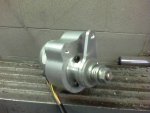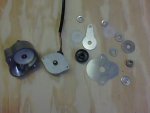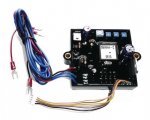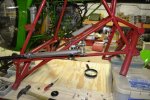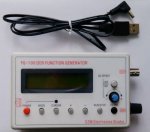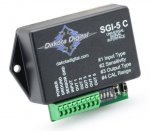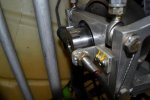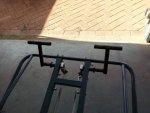Oskar
Member
- Joined
- Mar 10, 2007
- Messages
- 330
- Location
- Auckland, New Zealand
- Aircraft
- R22, MTO Sport, GyroBee, Mosquito Air
One of the biggest difficulties with governors is that the control parameters need to be set up for the system you are trying to control. The inertia of a car is orders of magnitude higher than the inertia of a rotor, which means that it is very unlikely that a governor optimised for a car will work well in a helicopter. A two stoke engine behaves very differently to a four stroke, engines with a flat torque curve are much easier to control than high performance engines with a peaky torque curve.
I built a governor for a Mosquito Air and it took me about 10 hours of tuning to get it to work well over all flight conditions. If the engine is loaded it's relatively easy, when the engine is lightly loaded it is a lot more difficult. Even the R22 governor sometimes hunts under lightly loaded conditions.
I then put the same governor on a Mosquito XE. The XE is very similar to the Air, same engine but slightly longer blades. The slightly longer blades changed the system enough to have to fine tune the controller again.
The controller I built was microprocessor based using fuzzy logic. The control parameters (which were set up in software) had to be set up accurately to achieve stable operation under all flight conditions.
The second part of the governor is the actuator. The design of the actuator depends a lot on the design of the throttle mechanism used, engines using cables and Bing 54 carbs are tricky because of the very strong return springs used in the carbs. A R22 uses mechanical linkages with no spring return which is much easier.
Robinson would have spent a long time optimising their governor for their machine, be very careful of taking just any old box which has "governor" written on it and expecting it to work first time in a helicopter. John knows what can happen if you do that...
I built a governor for a Mosquito Air and it took me about 10 hours of tuning to get it to work well over all flight conditions. If the engine is loaded it's relatively easy, when the engine is lightly loaded it is a lot more difficult. Even the R22 governor sometimes hunts under lightly loaded conditions.
I then put the same governor on a Mosquito XE. The XE is very similar to the Air, same engine but slightly longer blades. The slightly longer blades changed the system enough to have to fine tune the controller again.
The controller I built was microprocessor based using fuzzy logic. The control parameters (which were set up in software) had to be set up accurately to achieve stable operation under all flight conditions.
The second part of the governor is the actuator. The design of the actuator depends a lot on the design of the throttle mechanism used, engines using cables and Bing 54 carbs are tricky because of the very strong return springs used in the carbs. A R22 uses mechanical linkages with no spring return which is much easier.
Robinson would have spent a long time optimising their governor for their machine, be very careful of taking just any old box which has "governor" written on it and expecting it to work first time in a helicopter. John knows what can happen if you do that...

